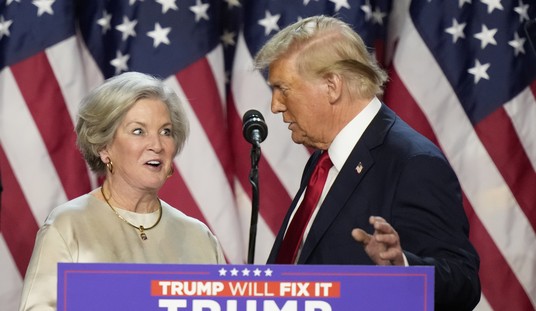A couple of weeks ago, I debunked the myth that Obama is a fiscal conservative by showing how TARP masks his real record.
I then followed up that post by showing that Obama is a traditional leftist who spends on social welfare programs, but also did a final post showing that Bush was similarly profligate.
Now we have some additional research confirming these points. Art Laffer and Steve Moore investigate Obama’s claim in today’s Wall Street Journal.
They start with an acknowledgement that the burden of spending declined during the Clinton years.
Here’s the picture. In the chart nearby we’ve plotted federal government spending on a National Income and Product Accounts (NIPA) basis as a share of total U.S. GDP from 1990 to the present. …The stories the chart tells are amazing. …The first is how much government spending fell during President Bill Clinton’s eight years in office and how low it was when he left office. When he became president in 1992, government spending was 23.5% of GDP, and when he left in 2001 it was 19.5% of GDP. President Clinton, in conjunction with a solid Republican Congress, cut government spending by more than any other president in modern times, and oversaw one of the greatest periods of economic growth and prosperity in U.S. history.
Since I’ve done a video highlighting the good fiscal record of both Reagan and Clinton, this is music to my ears.
Unfortunately, policy moved in the wrong direction once Bush got to the White House – and Laffer and Moore specifically highlight the negative impact of Nancy Pelosi and Harry Reid.
…the biggest surge in government spending came during the last two years of President George W. Bush’s eight years in office (2007-2008). A weakened Republican president dealing with a strident Democratic Congress, led by then-House Speaker Nancy Pelosi and Senate Majority Leader Harry Reid, resulted in an orgy of spending. Mr. Bush and Republicans in Congress capitulated to and even promoted each and every government bailout and populist redistribution canard put before them. It’s a long list, starting with the 2003 trillion-dollar Medicare prescription drug benefit and culminating with the actions taken to stem the 2008 financial meltdown—the $700 billion Troubled Asset Relief Program, the bailout of insurance giant AIG and government-sponsored lenders Fannie Mae and Freddie Mac, the ill-advised 2008 $600-per-person tax rebate, the stimulus add-ons to 2007's housing and farm bills, etc.
Recommended
Needless to say, Obama decided to double down on Bush’s failed policies.
After taking office in 2009, with spending and debt already at record high levels and the deficit headed to $1 trillion, President Obama proceeded to pass his own $830 billion stimulus, auto bailouts, mortgage relief plans, the Dodd-Frank financial reforms and the $1.7 trillion ObamaCare entitlement (which isn’t even accounted for in the chart).
Adding injury to injury, the so-called stimulus didn’t work. And the authors are right about the looming fiscal nightmare of Obamacare.
It’s also worth noting that Keynesian spending didn’t work for Hoover and Roosevelt back in the 1930s, and Laffer and Moore also explain how those two supporters of statism exacerbated the damage with class-warfare tax policy.
Like President Obama, President Hoover proposed massive tax increases. Unlike Mr. Obama, Hoover was successful. The highest marginal income tax rate jumped to 63% from 24% on Jan. 1, 1932. That November, Hoover lost the election to Franklin D. Roosevelt in a landslide. As if Hoover’s tax increases weren’t enough, on Jan. 1, 1936, FDR raised the highest marginal income tax rate to 79% with further rate increases up to 83% coming later. Estate and gift taxes, taxes on retained earnings, state and local taxes were also raised. This is why the Great Depression was the Great Depression—massive deficit spending and tax rate increases.
But that’s a separate issue. The key takeaway from the Laffer/Moore column is that government spending undermines prosperity.
…the most amazing feature of the nearby chart, which is rarely ever noted, is that when spending declined sharply the economy boomed under President Clinton, and when spending soared under Presidents Bush and Obama, the economy tanked.
P.S. For those who appreciated a more humorous look at Obama’s record, here are two amusing cartoons.

























Join the conversation as a VIP Member